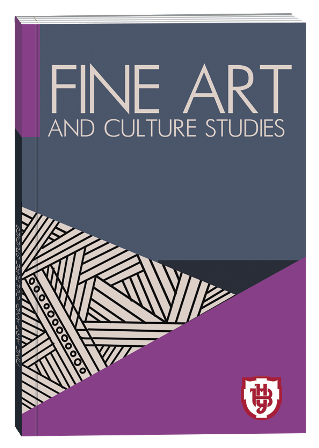THE IMAGE OF DANCE IN CULTURAL ANTHROPOLOGY
DOI:
https://doi.org/10.32782/facs-2025-4-43Abstract
Dance is not only an aesthetic dimension of life but also a form of its profound comprehension. It often reflects those aspects of social existence that are difficult to convey through verbal means. Its origins date back to the pre-literate era, which testifies to the fundamental influence of dance on human life since the very beginning of civilization.The aim of the article is to explore the image of dance in the concepts of leading cultural anthropologists such as E. Tylor, J. Frazer, B. Malinowski, E. Evans-Pritchard, and J. Eller.The research methodology. The methodological framework of the article is based on the principles of historicism and the comparative method, which made it possible to identify the connotations of dance both in modern culture and in primitive and traditional cultural practices.Scientific novelty. The analysis of the works of George Frazer, Bronisław Malinowski, E. E. Evans-Pritchard, and Jack Eller demonstrates that in primitive societies dance constituted an integral part of religious, social, and cultural practices.It functioned not only as a form of artistic entertainment but also as a sacred ritual, a means of communication with the supernatural, an instrument of social integration, and a symbolic representation of vital processes (hunting, warfare, agriculture). The dramatic art of European civilization originated from the sacred dances of Ancient Greece, which confirms the deep interconnection between dance, theatrical, and literary forms. At the same time, ethnographic evidence from New Guinea, Africa, and Tibet illustrates the universal character of this phenomenon: in different cultures, dance served as a «bridge» between humans, nature, and the sacred sphere.Conclusions. Despite the almost complete disappearance of sacred dance in modern culture, its rudimentary forms are still preserved in folk traditions, ceremonies, and rituals of various ethnic groups. This testifies to the resilience of dance as a universal cultural practice capable of combining religious, social, and aesthetic principles. Thus, dance emerges not only as an artistic phenomenon but also as a fundamental form of expressing the collective experience of humanity, manifested across different historical periods and cultural traditions.
References
Balée W. Inside Cultures: An Introduction to Cultural Anthropology. Abingdon: Routledge, 2022. 324 p.
Eller J. Introducing Anthropology of Religion: Culture to the Ultimate. New York and London: Routledge Taylor & Francis Group, 2007. 352 p.
Eriksen T. Small Places, Large Issues: An Introduction to Social and Cultural Anthropology. London: Pluto Press, 2023. 504 p.
Evans-Pritchard E. Theories of primitive religion. Oxford: At The Clarendon Press, 1965. 132 p.
Frazer J. The Golden Bough: A Study in Magic and Religion: A New Abridgement from the Second and Third Editions (Oxford World’s Classics). Oxford: Oxford University Press, 2009. 858 p.
Huizinga J. Homo Ludens: A Study of the Play-Element in Culture. London: Routledge & Kegan Paul Ltd, 1949. 220 p.
Kringelbach H., Skinner J. Dancing Cultures Globalization, Tourism and Identity in the Anthropology of Dance. New York, Oxford: Berghahn, 2014. 228 p.
Kringelbach H., Skinner J. Introduction: The Movement of Dancing Cultures. Dancing Cultures Globalization, Tourism and Identity in the Anthropology of Dance. New York, Oxford: Berghahn, 2014. P. 1–28.
Kottak C. Mirror for Humanity: A Concise Introduction to Cultural Anthropology. New York: McGraw-Hill Education, 2022. 384 p.
Malinowski B. Magic, Science and Religion and Other Essays. Boston: Beacon Press, 1948. 327 p.
Tylor E. Anthropology an introduction to the study of man and civilization. New York: D. Appelton and Company, 1896. 440 p.








